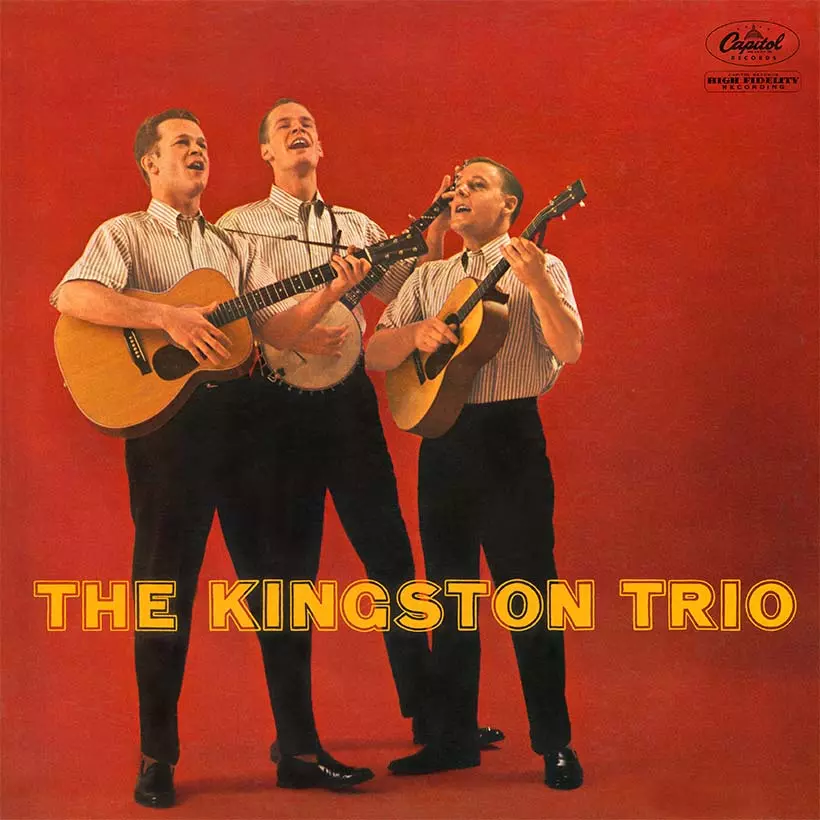- My Forums
- Tiger Rant
- LSU Recruiting
- SEC Rant
- Saints Talk
- Pelicans Talk
- More Sports Board
- Fantasy Sports
- Golf Board
- Soccer Board
- O-T Lounge
- Tech Board
- Home/Garden Board
- Outdoor Board
- Health/Fitness Board
- Movie/TV Board
- Book Board
- Music Board
- Political Talk
- Money Talk
- Fark Board
- Gaming Board
- Travel Board
- Food/Drink Board
- Ticket Exchange
- TD Help Board
Customize My Forums- View All Forums
- Show Left Links
- Topic Sort Options
- Trending Topics
- Recent Topics
- Active Topics
Started By
Message
The Story Behind Tom Dooley
Posted on 11/6/21 at 10:35 am
Posted on 11/6/21 at 10:35 am
"Tom Dooley" is a traditional North Carolina folk song based on the 1866 murder of a woman named Laura Foster in Wilkes County, North Carolina by Tom Dula (whose name in the local dialect was pronounced "Dooley"). One of the more famous murder ballads, a popular hit version recorded in 1958 by The Kingston Trio, which reached No. 1 in Billboard Hot 100 singles chart, and also was top 10 on the Billboard R&B chart, and appeared in the Cashbox Country Music Top 20.
The song was selected as one of the American Songs of the Century by the Recording Industry Association of America (RIAA), the National Endowment for the Arts, and Scholastic Inc. Members of the Western Writers of America chose it as one of the Top 100 Western songs of all time.
"Tom Dooley" fits within the wider genre of Appalachian "sweetheart murder ballads". A local poet named Thomas Land wrote a song about the tragedy, titled "Tom Dooley", shortly after Dula was hanged. In the documentary Appalachian Journey (1991), folklorist Alan Lomax describes Frank Proffitt as the "original source" for the song, which was misleading only in that he didn't write it. There are several earlier known recordings, notably one that Grayson and Whitter made in 1929, approximately 10 years before Proffitt cut his own recording.
The Kingston Trio took their version from Frank Warner's singing. Warner had learned the song from Proffitt, who learned it from his Aunt Nancy Prather, whose parents had known both Laura Foster and Tom Dula. In a 1967 interview, Nick Reynolds of the Kingston Trio recounts first hearing the song from another performer, and then being criticized and sued for taking credit for the song.
Supported by the testimony of Anne and Frank Warner, Frank Proffitt was eventually acknowledged by the courts as the preserver of the original version of the song, and the Kingston Trio were ordered to pay royalties to him for their uncredited use of it.
History
********
Main article: Tom Dula
————————————
In 1866, Laura Foster was murdered. Confederate veteran Tom Dula, Foster's lover and the father of her unborn child, was convicted of her murder and hanged May 1, 1868. Foster had been stabbed to death with a large knife, and the brutality of the attack partly accounted for the widespread publicity of the murder and subsequent trial received.
Anne Foster Melton, Laura's cousin, had been Dula's lover from the time he was twelve and until he left for the Civil War – even after Anne married an older man named James Melton. When Dula returned, he became a lover again to Anne, then Laura, then their cousin Pauline Foster. Pauline's comments led to the discovery of Laura's body and accusations against both Tom and Anne. Anne was subsequently acquitted in a separate trial, based on Dula's word that she had nothing to do with the killing. Dula's enigmatic statement on the gallows that he had not harmed Foster but still deserved his punishment led to press speculation that Melton was the actual killer and that Dula simply covered for her. (Melton, who had once expressed jealousy of Dula's purported plans to marry Foster, died either in a carting accident or by going insane a few years after the homicide, depending on the version.)
Thanks to the efforts of newspapers such as The New York Times and to the fact that former North Carolina governor Zebulon Vance represented Dula pro bono, Dula's murder trial and hanging were given widespread national publicity. A local poet, Thomas C. Land, wrote a song titled "Tom Dooley" about Dula's tragedy soon after the hanging. Combined with the widespread publicity the trial received, Land's song further cemented Dula's place in North Carolina legend and is still sung today throughout North Carolina.
A man named "Grayson", mentioned in the song as pivotal in Dula's downfall, has sometimes been characterized as a romantic rival of Dula's or a vengeful sheriff who captured him and presided over his hanging. Some variant lyrics of the song portray Grayson in that light, and the spoken introduction to the Kingston Trio version did the same. Col. James Grayson was actually a Tennessee politician who had hired Dula on his farm when the young man fled North Carolina under suspicion and was using a false name. Grayson did help North Carolinians capture Dula and was involved in returning him to North Carolina but otherwise played no role in the case.
Dula was tried in Statesville because it was believed he could not get a fair trial in Wilkes County. He was given a new trial on appeal but he was again convicted and hanged on May 1, 1868. On the gallows, Dula reportedly stated, "Gentlemen, do you see this hand? I didn't harm a hair on the girl's head."
Dula's last name was pronounced "Dooley," leading to some confusion in spelling over the years. The pronunciation of a final "a" like "y" is an old feature in Appalachian speech, as in the term "Grand Ole Opry". The confusion was compounded by the fact that Dr. Tom Dooley, an American physician known for international humanitarian work, was at the height of his fame in 1958 when the Kingston Trio version became a major hit.

The song was selected as one of the American Songs of the Century by the Recording Industry Association of America (RIAA), the National Endowment for the Arts, and Scholastic Inc. Members of the Western Writers of America chose it as one of the Top 100 Western songs of all time.
"Tom Dooley" fits within the wider genre of Appalachian "sweetheart murder ballads". A local poet named Thomas Land wrote a song about the tragedy, titled "Tom Dooley", shortly after Dula was hanged. In the documentary Appalachian Journey (1991), folklorist Alan Lomax describes Frank Proffitt as the "original source" for the song, which was misleading only in that he didn't write it. There are several earlier known recordings, notably one that Grayson and Whitter made in 1929, approximately 10 years before Proffitt cut his own recording.
The Kingston Trio took their version from Frank Warner's singing. Warner had learned the song from Proffitt, who learned it from his Aunt Nancy Prather, whose parents had known both Laura Foster and Tom Dula. In a 1967 interview, Nick Reynolds of the Kingston Trio recounts first hearing the song from another performer, and then being criticized and sued for taking credit for the song.
Supported by the testimony of Anne and Frank Warner, Frank Proffitt was eventually acknowledged by the courts as the preserver of the original version of the song, and the Kingston Trio were ordered to pay royalties to him for their uncredited use of it.
History
********
Main article: Tom Dula
————————————
In 1866, Laura Foster was murdered. Confederate veteran Tom Dula, Foster's lover and the father of her unborn child, was convicted of her murder and hanged May 1, 1868. Foster had been stabbed to death with a large knife, and the brutality of the attack partly accounted for the widespread publicity of the murder and subsequent trial received.
Anne Foster Melton, Laura's cousin, had been Dula's lover from the time he was twelve and until he left for the Civil War – even after Anne married an older man named James Melton. When Dula returned, he became a lover again to Anne, then Laura, then their cousin Pauline Foster. Pauline's comments led to the discovery of Laura's body and accusations against both Tom and Anne. Anne was subsequently acquitted in a separate trial, based on Dula's word that she had nothing to do with the killing. Dula's enigmatic statement on the gallows that he had not harmed Foster but still deserved his punishment led to press speculation that Melton was the actual killer and that Dula simply covered for her. (Melton, who had once expressed jealousy of Dula's purported plans to marry Foster, died either in a carting accident or by going insane a few years after the homicide, depending on the version.)
Thanks to the efforts of newspapers such as The New York Times and to the fact that former North Carolina governor Zebulon Vance represented Dula pro bono, Dula's murder trial and hanging were given widespread national publicity. A local poet, Thomas C. Land, wrote a song titled "Tom Dooley" about Dula's tragedy soon after the hanging. Combined with the widespread publicity the trial received, Land's song further cemented Dula's place in North Carolina legend and is still sung today throughout North Carolina.
A man named "Grayson", mentioned in the song as pivotal in Dula's downfall, has sometimes been characterized as a romantic rival of Dula's or a vengeful sheriff who captured him and presided over his hanging. Some variant lyrics of the song portray Grayson in that light, and the spoken introduction to the Kingston Trio version did the same. Col. James Grayson was actually a Tennessee politician who had hired Dula on his farm when the young man fled North Carolina under suspicion and was using a false name. Grayson did help North Carolinians capture Dula and was involved in returning him to North Carolina but otherwise played no role in the case.
Dula was tried in Statesville because it was believed he could not get a fair trial in Wilkes County. He was given a new trial on appeal but he was again convicted and hanged on May 1, 1868. On the gallows, Dula reportedly stated, "Gentlemen, do you see this hand? I didn't harm a hair on the girl's head."
Dula's last name was pronounced "Dooley," leading to some confusion in spelling over the years. The pronunciation of a final "a" like "y" is an old feature in Appalachian speech, as in the term "Grand Ole Opry". The confusion was compounded by the fact that Dr. Tom Dooley, an American physician known for international humanitarian work, was at the height of his fame in 1958 when the Kingston Trio version became a major hit.

Posted on 11/6/21 at 10:53 am to blueridgeTiger
hang your head Tom Dooley
Hang your head and cry
Killed poor Laura foster and you know you’re bound to die
Garcia played it a few times in acoustic sets
Hang your head and cry
Killed poor Laura foster and you know you’re bound to die
Garcia played it a few times in acoustic sets
Posted on 11/12/21 at 1:10 am to cgrand
Did they really wait two years to execute somebody back then? I thought that executions moved along a lot quicker in the old old days.
Popular
Back to top

 1
1






